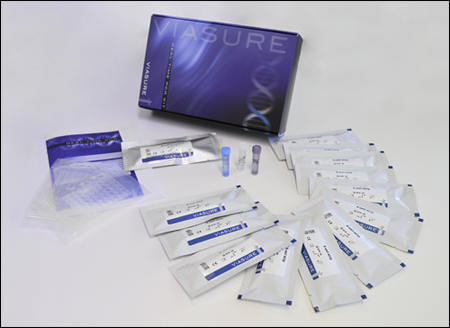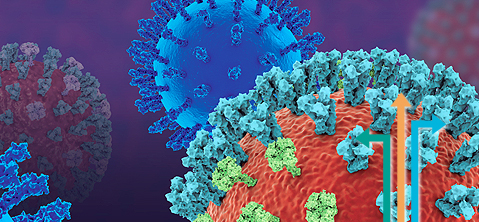
VIASURE Real Time PCR Detection Kits
Respiratory Viral Panel I [(Flu A, Flu B & RSV) + (H1N1, H5N1, H3N2 & H7N9)]

Description
VIASURE Respiratory Viral Panel I Real Time PCR Detection Kit is designed for simultaneous detection of Influenza A, Influenza B, and Respiratory Syncytial (RSV) viruses and subtyping of Influenza A (H1N1)pdm09, H3N2, H5N1, and H7N9 in respiratory samples from patients with signs and symptoms of respiratory viral infection.
This test is intended for use as an aid in the diagnosis of Flu A, Flu B and/or RSV in combination with clinical and epidemiological risk factors and evaluation of infections with Influenza A subtypes: (H1N1)pdm09, H3N2, H5N1, and H7N9.
RNA is extracted from specimens, amplified using RT-PCR and detected using fluorescent reporter dye probes specific for Flu A (as well as, (H1N1)pdm09, H3N2, H5N1, and H7N9 subtypes), Flu B and RSV.
Specifications
Information
Influenza virus is an enveloped, single stranded RNA virus that belongs to the Orthomyxoviridae family and causes the majority of viral lower respiratory tract infections. Influenza A and B are a significant cause of morbidity and mortality worldwide, considering that elderly and compromised individuals are especially at risk of developing severe illness and complications such as pneumonia. People feel some or all of these symptoms: fever or feeling feverish/chills, cough, sore throat, nasal stuffiness and discharge, myalgia, headaches, and anorexia. The influenza viruses can be spread from person to person in two different ways: through the air (large droplets and aerosols from sneezing and coughing), and by direct or indirect contact.
Influenza A viruses has been classified into subtypes based on the combinations of the envelope proteins hemagglutinin (HA) and neuraminidase (NA). Currently, influenza A(H1N1) and A(H3N2) are the circulating seasonal influenza A virus subtypes. This seasonal A(H1N1) virus is the same virus that caused the 2009 influenza pandemic. Influenza A(H3N2v) viruses were first detected in people in 2011, being its infections associated with prolonged exposure to pigs at agricultural fairs. Besides, humans can also be infected with avian influenza virus subtypes A(H5N1) and A(H7N9) since their emergence in China in 2003 and 2013, respectively. Influenza A(H5N1) virus has spread from Asia to Europe and Africa, and has become entrenched in poultry populations in some countries. Outbreaks have resulted in millions of poultry infections and several hundred human cases, who often display severe pneumonia and greater than 50% mortality. Avian Influenza A(H7N9) virus spreads faster than H5N1 and commonly resulted in severe respiratory illness, although its mortality rate (20%) is lower than that attributed to H5N1 virus. Whereas, Influenza B is only divided into 2 antigenically and genetically distinct lineages, Victoria and Yamagata.
Human respiratory syncytial viruses (RSV) belong to the Paramyxoviridae family and are the most important viral agents of acute respiratory infections. RSV is an enveloped, nonsegmented, negative, single stranded linear RNA genome virus. Respiratory syncytial virus is a common contributor of respiratory infections causing bronchitis, pneumonia, and chronic obstructive pulmonary infections in people of all ages. People often feel some or all of these symptoms: rhinorrhea, low-grade fever, cough, sore throat, headache, and wheezing. RSV is transmitted via large nasopharyngeal secretion droplets from infected individuals, close contact, or self-inoculation after touching contaminated surfaces. Diagnosis can be problematic, as a wide range of pathogens can cause acute respiratory infections presenting with similar clinical syndromes. Real-time PCR assays have been shown to be a sensitive and specific diagnostic tool for the detection of Influenza A, Influenza B and RSV viruses, as well as, of Influenza A subtyping.

